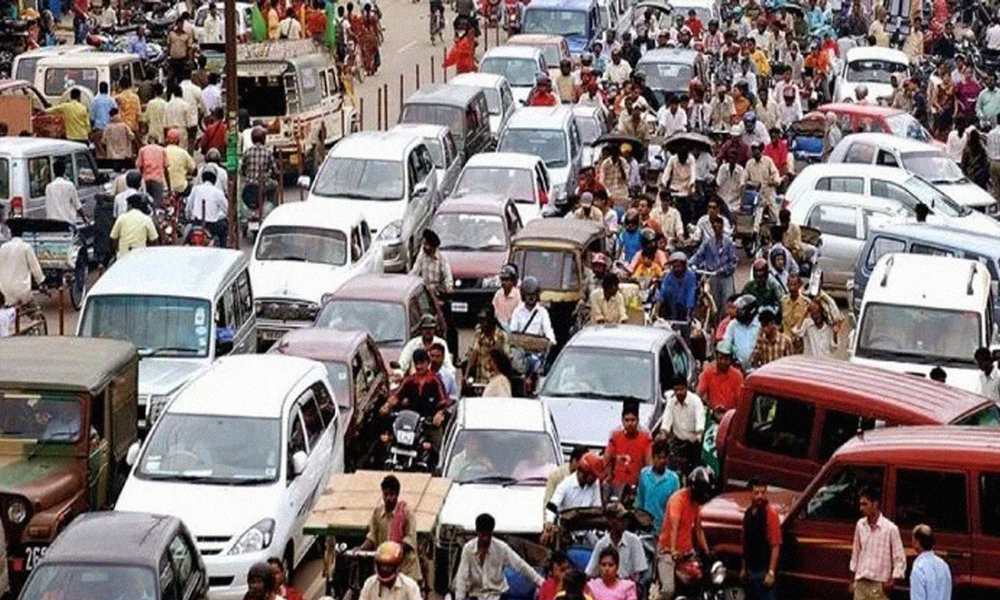
Image Credit: Patrika
1.2 Cr Residents, Only 385 COVID-19 Cases, How Bengaluru Effectively Contained Deadly Virus
Writer: Navya Singh
Navya writes and speaks about matters that often do not come out or doesn’t see daylight. Defense and economy of the country is of special interest to her and a lot of her content revolves around that.
Karnataka, 4 Jun 2020 2:10 PM GMT
Editor : Prateek Gautam |
A free soul who believes that journalism, apart from politics, should stand for social cause and the environment.
Creatives : Abhishek M
" An engineer by profession, Abhishek is the creative producer of the team, graphic designing is his passion and travelling his get away. In more ways than one, he makes the content visually appealing."
"The police had closed around 50 percent of the main roads in Bengaluru to discourage traffic. Checkposts were set up across the city, which was effective in reducing people's movement," IPS Bhaskar Rao, Bengaluru police commissioner said.
Most of the big cities, which include, Chennai, Mumbai and Delhi reported a massive spike as of June 1. However, in case of Karnataka's capital, the city reported 385 cases, of which 237 have already recovered, and only 136 people are undergoing treatment for the virus.
The important question remains- how did such a massive city report such less number of COVID-19 cases?
Experts and government officials have lauded the the city's implementation of measures, which include, tracing, tracking, testing and treating in containing the virus effectively.
The Karnataka government initially permitted experts to operate without any political intervention. The close coordination between the bureaucracy and the medical experts proved to be very successful in fighting the deadly virus.
Dr Giridhar Babu, who is part of ICMR's research task force on Epidemiology and Surveillance, and a part of Karnataka state's Technical Advisory Committee, believes that the autonomy given to the technical committee in the state should be followed by all states at such a time.
"In Karnataka, the driving force (against COVID) was the health department. We never had an instance where they turned down our suggestions. Even if an idea was counter-intuitive, after deliberations, they implemented it. The trust placed in the experts was astonishing," Dr Giridhar told The Quint.
Bengaluru also laid great emphasis on effective contract tracing, something constantly stressed upon by the World Health Organisation (WHO) to combat COVID-19. The city reported its first COVID-19 case on March 8 and within no time, the state health department along with the Bruhat Bengaluru Mahanagara Palike (BBMP) created a list of 2,666 people who had come in contact with the 40-year-old techie who had returned from the United States.
The primary and secondary contacts that were traced were immediately sent into home quarantine which helped in curbing the spread of the virus. In some specific cases, the health department even traced contacts as far back as one month.
As per reports, more than 90 percent of COVID-19 cases in the state have been asymptomatic, and the government claims it to be a success only because of effective contact tracing.
As of June 1, out of the 3,408 cases in Karnataka, 2,132 cases were of domestic passengers.
Testing the correct people also helped the state keep a check on the spread of the virus.
On April 15, Karnataka had decided to test all the people suffering from influenza and Severe Acute Respiratory Illness (SARI). The health department later also asked all medical stores to collect details of those purchasing medicines for these specific illness.
An extensive door to door survey was also launched and is still underway across the state, which has covered nearly 72 percent of the households as of now.
"Earlier, if a primary contact was in one of the districts, we had to send a report to the district collector to track it. This information was then sent to the tracking staff on the ground. This was time-consuming," a war room official claimed.
The state later launched an app to track cases. Whenever a new case is reported and the patient shares contact details, the details are fed into this app.
"Now, since the information is available on the cloud, respective officials are alerted directly and sooner for tracking. This app cuts down all the bureaucratic processes and delays," the official added.
Bengaluru was also able to successfully control its containment zones more efficiently than most of the other cities, e.g. Dharavi in Mumbai and Nizamuddin in Delhi.
One of the initial clusters in the state was a pharmaceutical company in Mysuru, which reported as many as 74 cases. The entire district was immediately put under a stringent lockdown and emerged free of COVID-19 within the next 56 days.
Bengaluru had one of the most stringent lockdowns.
"The police had closed around 50 percent of the main roads in Bengaluru to discourage traffic. Checkposts were set up across the city, which was effective in reducing people's movement," IPS Bhaskar Rao, Bengaluru police commissioner said.
As the country now enters the Unlock 1.0 phase, Karnataka, especially Bengaluru is all set with a strong surveillance and three crucial steps to keep COVID-19 free as prescribed by Dr Babu.
Step 1: Expanding Symptoms
"We need to expand the definition of COVID symptoms. We need to include loss of smell, loss of taste, weakness, muscle pain etc. If anyone has two of these or existing symptoms, we should home isolate them."
Step 2: Prevent Cluster Formations
"We need to ensure there are no cluster formations. Nearly 80 percent of the cases across the world are caused by 20 percent of people, in clusters. So, all large gatherings like marriages, conferences, working in closed places, etc, should be avoided over the next few months.
Step 3: Identify, Track Super Spreaders
"Third step is to identify the super spreaders quickly. If we can successfully home isolate the most symptomatic, we can contain the super spreaders. A strong surveillance strategy would play a key role in this."
 All section
All section














